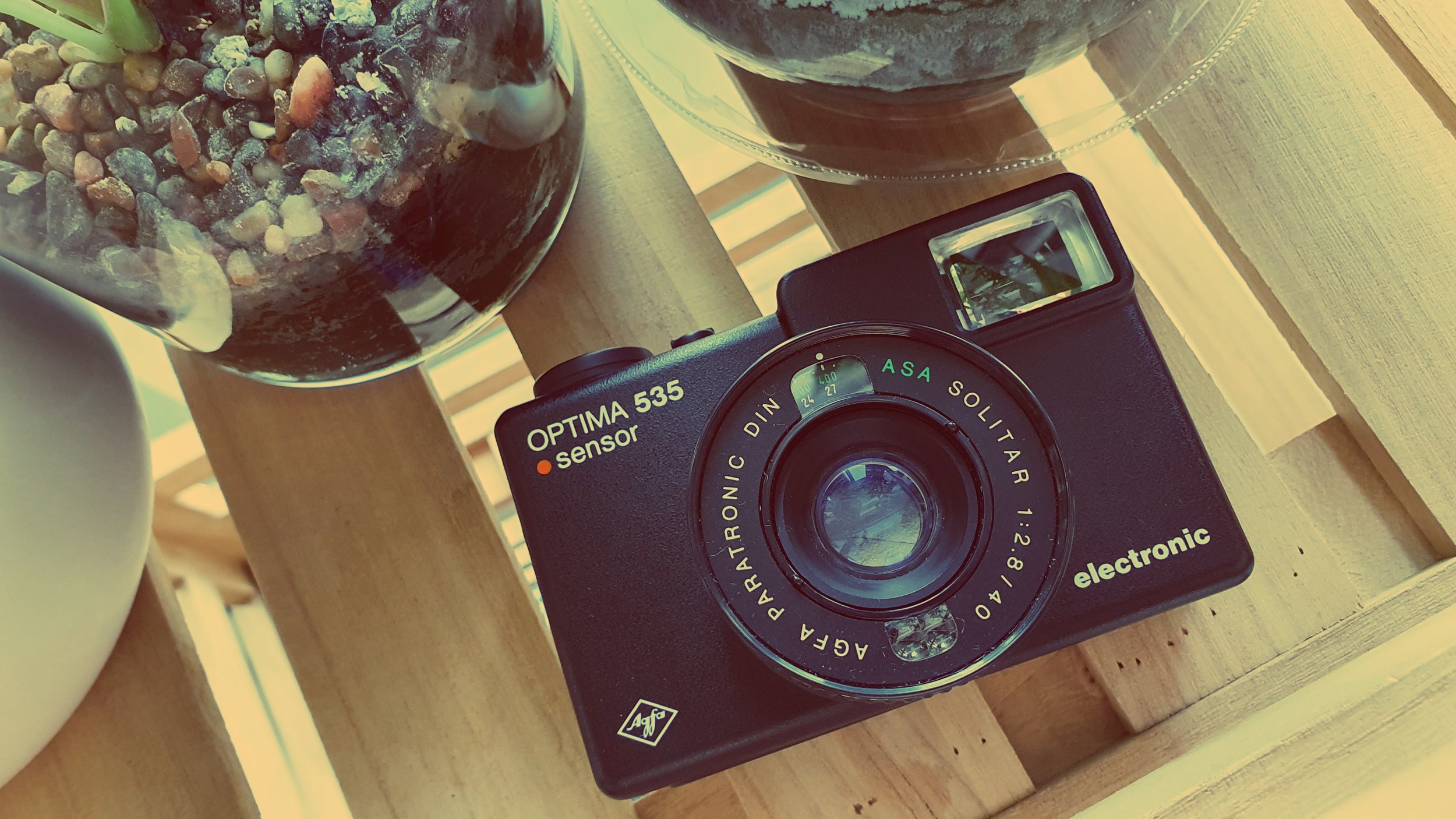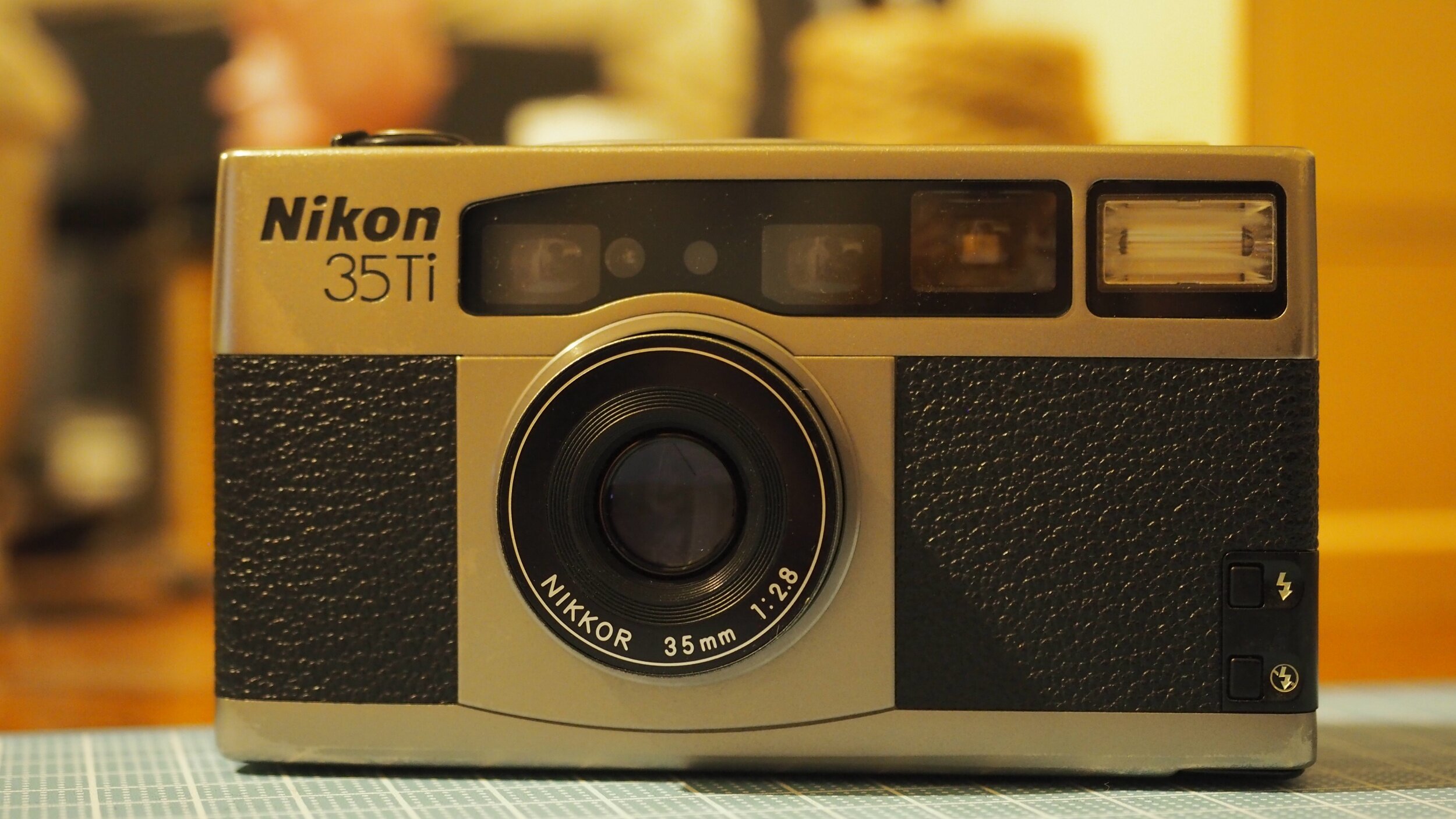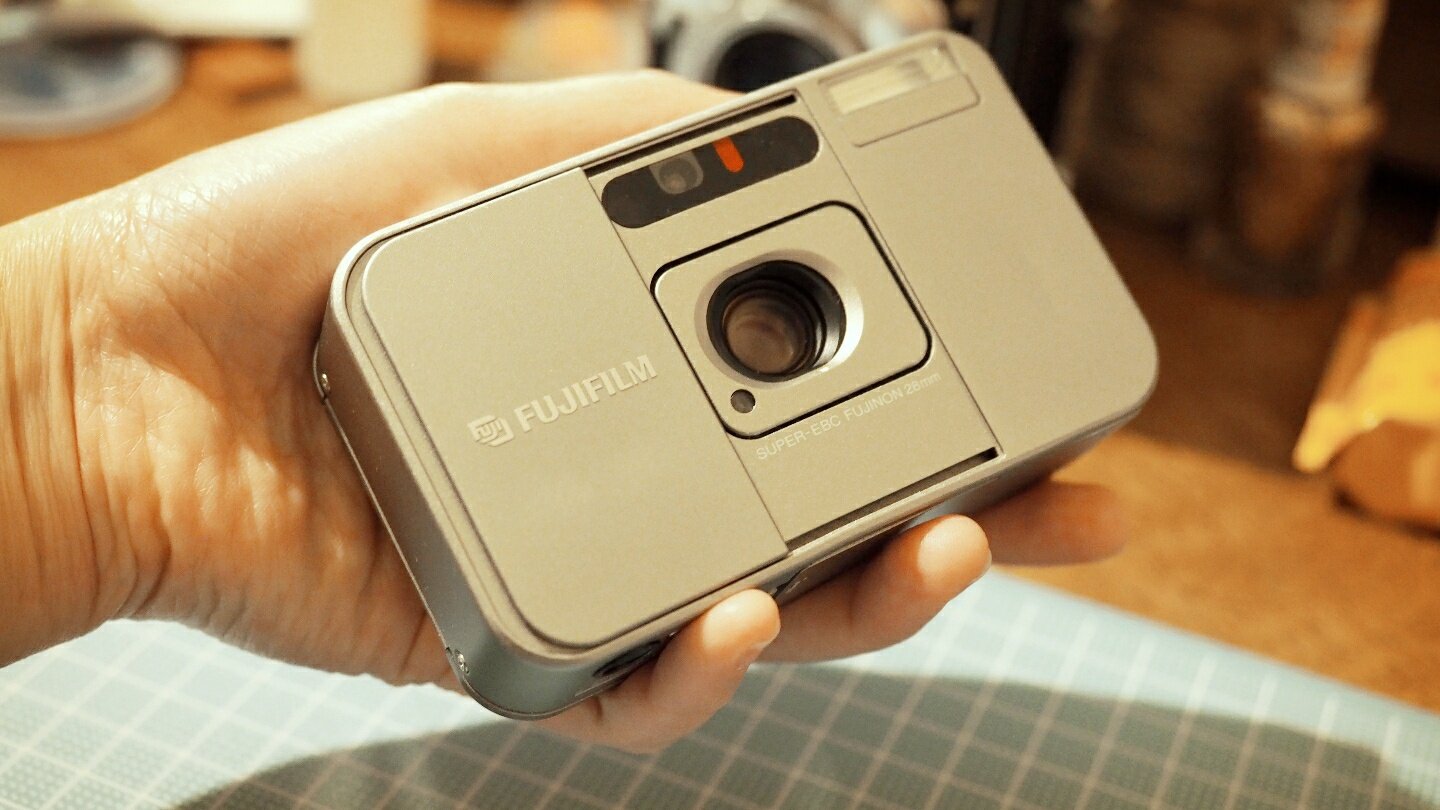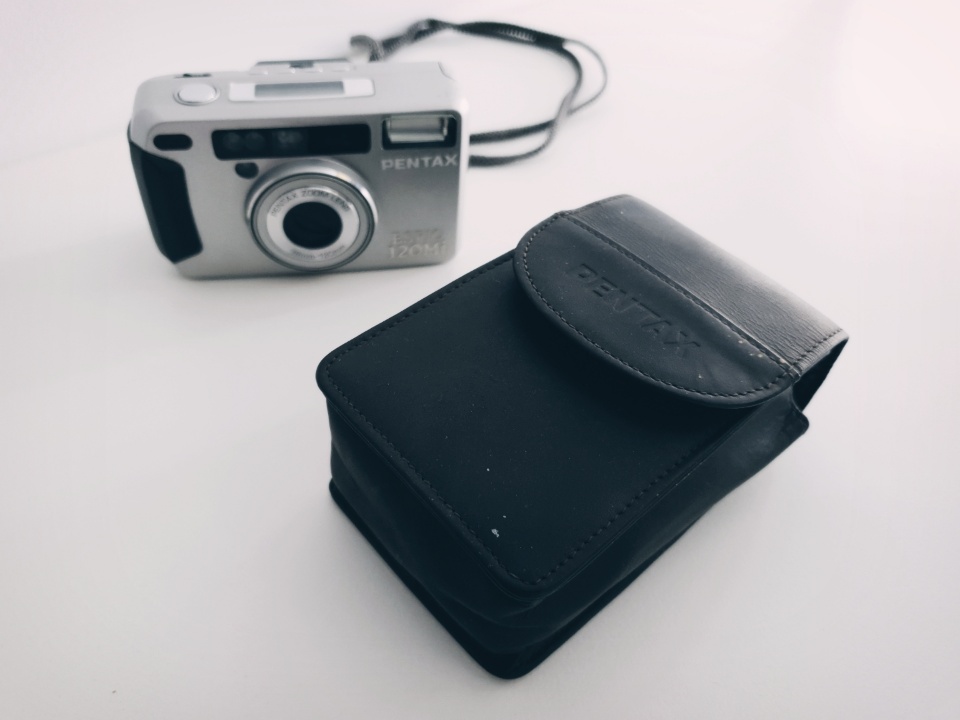Latest Posts
Review of the Minolta Xd (xd7/xd11) - why this camera is a Film Photographer’s Best-Kept Secret
The Minolta XD in black.
I have always had a soft spot for small SLR film cameras. There’s something magical about carrying one around all day, so light and effortless that you hardly notice it - until it’s time to capture the perfect shot. As an owner and user of the Nikon FE2 and FM2n and the Olympus OM2-n, I enjoy their smaller size yet full-sized capability of being a professional film camera.
This review will not focus on the technical specifications, as those are easily found online. Instead, I’ll share my experience with the camera as an avid hobbyist film photographer. By offering my personal insights, photos, and reflections on how this camera performed (or fell short), I hope to provide practical value to anyone considering adding it to their collection.
While casually browsing eBay, I stumbled upon the Minolta XD during my quest to score the ultimate deal of the season - much like the envy-inducing Leica and Hasselblad steals proudly shared by fellow Redditors. Before I knew it, I ended up with not just one, but soon three of these cameras - and I’ll explain shortly why I couldn’t stop at just one (there is a valid reason for this, I promise).
The smaller size and weight makes it an easy one for those with smaller hands and is a breeze to lug around for the entire day.
The Specifics:
The Minolta XD holds a unique place in photography history as the first camera to feature all three shooting modes: aperture priority, shutter priority, and full manual control. Talk about being packed with capability! When you hold and use the Minolta XD, it just feels right—it’s like cupping a warm mug of hot chocolate that fits perfectly in your hands, bringing a sense of cosy satisfaction. That’s the best way I can describe it. The camera isn’t overly large, making it a great fit for smaller hands. It carries just the right amount of weight to feel solid and well-built. It’s a camera that ‘s built for durability and it has clearly proven its ability to stand the test of time. Personally, I prefer cameras with a bit of heft - they feel tougher and less prone to careless handling. Lighter cameras, on the other hand, make me feel like I might be too carefree with them, though I know opinions on this vary.
The Minolta XD had different names depending on the region. In Japan, it was simply called the ‘XD.’ Europe knew it as the ‘XD7,’ while North America referred to it as the ‘XD11.’ I’m lucky to own both the black and silver XD variants. There was also a later Japanese release called the ‘XD-S,’ which introduced an eye diopter control in place of the shutter switch next to the viewfinder on the back. Aside from this, there were no significant differences in performance or specifications between the models.
Underneath the shutter release lever is a window with a red bar that will move forward as your advance your film. A nice visual queue to managing how far along you are in your film roll.
An interesting feature of the Minolta XD is a small window on the top-right back of the camera. This window shows a red bar indicating the progression of shots taken. While most photographers rely on the shutter counter on the top-right panel, the visual cue on the back is a nice (albeit optional) addition. Another noteworthy feature is the exposure compensation switch on the left side of the top panel. I found it interesting that this was incorporated as a switch rather than a dial but I guess this allowed for a less crowded appeal. While I find it slightly finicky, it’s not something I use often anyway, so it doesn’t detract from the camera’s overall usability. It’s a minor quirk in an otherwise exceptional piece of design.
User Experience:
To explain why I currently have two of the Minolta XDs - one in black and one in silver and soon-to-be-three - is for the following:
I have always had a preference (and slight obsession) for black cameras. The sleek mono colour that a black camera is so striking and looks so good in my hands when in use and when on my shelf.
I have a rather unhealthy habit of collecting different variants of the same model. Although this is significantly limited to how much film cameras now cost so I am not able to do this most of the time.
An inconvenience with my initial version led me to buying a new one, which unfortunately also had its own minor inconvenience. While both cameras still perform great as long as you’re compensating for the limitations, I still wanted a fully-working black version.
My second XD was a silver chrome model, and fortunately, its viewfinder was fully functional, displaying both the aperture and the selected shutter speed clearly. Using this camera, I came to truly appreciate the large, bright viewfinder that the Minolta XD offers—a feature that enhances the overall shooting experience.
Testing the silver model with its first roll was an enjoyable experience. It operated smoothly and proved straightforward to use in a bustling city environment where quick reactions and adaptability are key. However, after developing the roll, I noticed the light meter was underexposing scenes slightly, even after replacing the batteries. The in-camera metering consistently read one to two stops below my external light meter. While film is forgiving enough to handle minor under- or overexposure, this inconsistency made me hesitant to fully trust the aging metering system. For slower, more deliberate shooting, these quirks weren’t deal-breakers, but I couldn’t shake the desire for a camera that worked flawlessly in every aspect.
It took months of searching on eBay, but I eventually found a local Australian seller offering a black XD7 variant paired with a brand-new Rokkor 50mm f/1.4 lens. For $360 AUD, I think it was a good enough deal not to pass up, including the camera, lens, a lens filter, and a camera bag. Given how much shipping costs for cameras from the US or Japan, prices for a combination like this would be an easy $450 AUD and higher.
Photos:
The selected photos below were taken with my first black XD model paired with the impressive Rokkor 45mm f/2 lens. This lens is exceptionally light and compact, further highlighting the portable nature of the camera. For this roll, I used film salvaged from a disposable Kodak Flash 800 ISO camera, giving me around 27 exposures (with the first few affected by light leaks). I had a lot of great shots from this roll alone but here are my favourites:
The photos below were taken with the silver chrome XD model paired with a Rokkor 58mm f/1.4 lens and Kodak ColorPlus 200. While the lens is an excellent performer, the underexposure was something I should have not brushed aside too easily - I was overly confident relying on the in-built metering. That said, some daylight scenes turned out beautifully. As seen in the last photo, using an external light meter is essential for this camera!
Conclusion:
The Minolta XD is a stellar performer and easily one of the best SLRs I’ve ever used. Its compact size, straightforward design, and practical usability make it a joy to shoot with. From the relatively quiet shutter to its gorgeous finish (especially the black variant) and satisfying tactile response, the XD holds its own against heavyweights like the Nikon FM2, FE2, Canon AE-1, Olympus OM series, and Pentax K1000. In fact, I almost prefer that the Minolta XD isn’t as famous — it still feels like a hidden gem that offers exceptional quality at a much more affordable price point. For me, what makes this the better overall performer is not just the camera itself but access to a plethora of fantastic Minolta Rokkor lens selection. Again, they are not as overly priced compared to the other well-known brands and this makes access to some of the legendary Rokkor lens that much more realistic.
There is, however, one factor that does make me reconsider taking this camera out more often and that’s to do with the battery. This camera will require batteries to operate and, if the battery is depleted, the shutter won’t fire. On the plus side, you only need two of the very common LR44 batteries, which can be found almost anywhere. Still, it is a bit of a detractor for me. The only camera where I’ve never had to hesitate or think about is the Nikon FM2n, a fully mechanical camera and only requires the same type of batteries to operate the in-built light meter. If you can get past the batteries and make sure that you care a couple of spare ones, the Minolta XD is a strong candidate nonetheless.
As a film camera collector, my mantra has always been to collect cameras for their utility, not just as decorative pieces. I’ll admit, I have an unending urge to acquire more cameras. The joy of collecting them comes from the beauty in their design but also in their use them as they were meant to be, not leaving them idle on a shelf. I even clean and repair my cameras as much as I can, which makes me feel fortunate to engage with my collection.
The Minolta XD is a camera that doesn’t make me feel like I need to handle it with great care. I dislike cameras that demand excessive caution—they stifle creativity and prevent you from fully enjoying the creative photography process. The XD, on the other hand, is liberating. It’s the kind of camera that you can grab instinctively, even if it’s when you’re just popping to a local café in case something catches your eye. Cameras like this make photography feel natural and spontaneous. For all these reasons, the Minolta XD has earned a special place in my collection—but don’t forget to have an external light meter with you!
The Minimalist's Film Camera - Initial Thoughts on the Agfa Optima 535 Electronic Sensor
The Minimalist's Film Camera
Initial Thoughts on the Agfa Optima 535 Electronic Sensor.
Taking a temporary departure from the essay-like reviews I normally write for my initial thoughts and review on film cameras, I’m trying out a more minimalist approach that focuses on cleaner review comprising of a paragraph-long description, technical specifications, photos of the camera, and sample photos.
Thoughts:
If a minimalist was given a choice of film cameras, the Agfa Optima Electronic Sensor range would be high on their list. This is a beautifully designed film camera with clean lines, a heavenly large viewfinder, a near-perfect film advance lever, and that beautiful red shutter button. The few buttons and switches are all in the right places. This camera is an artform in itself. The camera operates with ease, the functionality is easy to get used to, and the performance, when done right, can result in some beautifully-framed shots.
Specifications:
Type: 35mm film viewfinder camera introduced in 1976 by Agfa and is part of the Agfa Optima Sensor series.
Lens: Solitar f2,8/40mm lens with 4 elements; single-coated.
Diaphragm: Automatic; f/2.8 to f/22.
Shutter: Paratronic with speeds 1/15-1/500.
Focus: Manual with pictograms and top and meter/feet scale on the bottom of the focus ring; focusing from 3ft/1.09m to infinity.
Viewfinder: Large finder with parallax marks for near focus.
Film loading style: Manual
Film advance: Manual single-strong lever with a ‘R’ button to rewind the film when pressed down and turned.
Film speeds: 25-500 ASA.
Flash: None but hot-shoe with flash selected in focus ring.
Cable release socket: Located on left side of the camera.
Tripod: Located on right side which is also used as a socket for a camera strap.
Case: Leather with camera strap socket hole.
Photos:
Test shots:
Film used: Kodak Ultramax 400
I am Titanium! - Initial Thoughts on the World's Most Advanced Point-and-Shoot Camera, the Nikon 35Ti
I am Titanium!
Initial Thoughts on the World’s Most Advanced Point-and-Shoot Camera, the Nikon 35Ti
While I’ve been busy in the typosphere and socialising with fellow typospherians in the virtual world of the internet, I’ve recently come upon an opportune chance to purchase a Nikon F2 - and I managed to negotiate a good price for it. After looking at my previous entry posts, I realised I didn’t post anything about one of my Nikon cameras, the titanium-clad Nikon 35Ti. Hence, the opportune moment arises for me to actually review the photos that I had taken quite some time ago and had full intent to post… but eventually forgot to do. Let’s start with a few photos to get the ions working.
Now you’ve got to take a minute to admire the sheer craft and technical sophistication that is unsurprisingly of Nikon. First off, a round of applause is well-deserved. The Nikon 35Ti has mostly been sparred against the Contaxt T2/T3 as both have just the same number of advanced options available on a point-and-shoot camera. Now, I don’t have enough money to purchase a Contax T2 or T3 so I cannot allude to their performance. But I don’t doubt all the wonderful things I’ve heard about the Contax T series in general. I do own a Contax G1 rangefinder camera and it was my main go-to for a couple of years before I started to explore other cameras. Let’s go back to the Nikon 35Ti. While some people may not be the biggest fan of its boxy look, it is still a beautiful gem to behold. From the looks alone, you can tell the premium build that this camera has been given. It is solid and reassuring to hold. The leatherette covering makes it feel steady and safe to hold for those with sweaty palms. No more broken film cameras from a lack of a strong grip! I have only just run a couple of rolls on this camera, but I think I have enough experience with the Nikon 35Ti to give my initial thoughts on – the goods and the bads.
Without going too technical here, there’s a quite few neat and especially impressive features that makes this camera such a overachiever for all the good reasons. While not a fully fleshed-out one, this camera has Nikon’s 3D matrix metering system. What this means is that it measures exposure instead of light. The Nikon 35Ti also has one of the most insanely sharp lenses on a compact point-and-shoot camera. I don’t recall any of my photos being out-of-focus. In fact, the autofocus was spot-on every single time. The camera didn’t struggle with it. I believe you can shoot manual focus, but I don’t even think why I’d bother with manual focus when the autofocus works so well - too well! One of the most unique features that this camera has – and I think one of its strongest selling points but the usability of it is still questionable – is the beautiful analog display system at the top of the camera. It’s like looking at an Omega Seamaster dial that’s been slapped onto a Nikon camera. While some may think it’s not as practical because of the fact that you’d have to take yourself away from the viewfinder just to look at what the settings are, but I do like it for its functionality as an advanced compact camera. I think it would be handy for night photography and I’ve some beautiful shots taken with this camera. The analog display system shows you everything you need to know in a very clear and concise manner and I like it a lot.
My only gripe with this camera is the tiny button for a flash that I have to press and hold down every time I want to stop the flash from firing. There are instructions on how to disable the flash by inputting some sort of binary code but I don’t know if this resets every time I turn the camera off and on again. I have pretty small fingers but I find it quite cumbersome to have to hold down that iddy bitty button every single time. I normally don’t use flash in a lot of my photography so I’m not too pleased about this. Had they made a bigger button or made it a toggle on/off situation, it will tick the boxes of a lot more people. Another little thing which doesn’t really bother me but may bother others who like their quieter cameras is how the lens noisily extends and retracts via electric motors. It’s a tad bit clunky for such a small thing.
The Nikon 35Ti matrix metering system, crazily sharp lens, titanium build, and unique analog display system makes it one of the finest choices for an advanced/premium/top-quality/top-of-the-line/insanely-priced-but-for-good reason point-and-shoot camera. It’s an expensive camera and you will definitely be able to get cheaper alternatives that may not necessarily have all the whistles and bells like this one does but will still give you some damn good performances. It is sort of like a middle-man between a very basic point-and-shoot and a manual SLR camera. Whether you need that in-between option is entirely up you. It’s a fantastic camera and heads will be turning because of that beautiful analog display.
Pentax-tic Gem - Initial photos of the Pentax Espio 120Mi
Pentax-tic Gem
Initial photos of the Pentax Espio 120Mi
I saw this camera sitting at around $30 on eBay. I got excited. From all the blogs, articles, forums, and camera websites relating to film cameras and film photography, I recall coming across this particular Pentax Espio 120Mi camera being one of those cameras to look out for. At the time of release, this camera retailed for a whopping $200 dollars. I’ve been pretty lucky with the eBay sellers I’ve been dealing with, because every camera I’ve bought from there has been meticulously taken care of over the many years of its camera’s lifetime. This is no exception. I will aim to write a more in-depth reaction of the camera and my experiences once I have had more time to bring it around with me. For now, enjoy these juicy photos.
Maitani's Little Ranger - The Olympus XA1
Maitani's Little Ranger
The Olympus XA1
Continuing on my Olympian historical adventure and revisiting the powerhouse’s milestones in camera innovation, I’ve purchased the Olympus XA1 from a seller in the Netherlands! This little beast is adorable and I’m expecting many a great things from this little mechanical and non-battery operated wonder.
The first thing to know is that this is the lesser-liked sibling of the Olympus XA series, and not to be confused with the original XA. I admit, I only realised this as soon as I had the camera in my hands. It’s not to say that I’m disappointed with the camera, certainly not! I was caught off guard by it. Reviews are mixed for the XA1. Some say it’s too limited by its settings and really just serves as a casual point-and-shoot with no professional quality to it. Others, on the hand, have proven its performance through gorgeous, sharp and well-framed shots. This prove a very good point, doesn’t it (you know, the whole thing about how it’s not just in the capability of the camera but also the skills of the photographer)?
I only had to do minimal wiping and cleaning to get it squeaky clean. Apart form the foam seals, which have almost become nothing, the Olympus XA1 is in pristine condition, thanks to good care given by the previous owner. There are substantial scratch marks on the flash, for which I cannot determine what might have caused it. It doesn’t affect the performance of the flash anyway, so I’ll only see it as a cosmetic flaw. Speaking of the flash, this is a particularly unique camera for the way its flash attaches and detaches from the right side of the camera when look front at it. Via a small screw, it firms sits next to it and syncs perfectly with the camera.
The other magical thing about this camera is that it is selenium-metered, meaning it doesn’t require any batteries to operate the camera, apart from a AA battery required for the flash. I’ve never owned a non-battery film camera before, so this will be surely leave interesting impressions and results. I will follow up with another post to talk about my experiences with the camera so far, and see if its serving its purposes in capturing anything video-games related.
Freshly loaded with film and battery fitted in the flash, I am finally in a position where I have an actual film camera to start using to capture any video-gaming related thing I see. The disposable camera phase has proven a lot of fun and has given me an idea of what results I can expect from film photography. I have another disposable camera I’ve just used up yesterday, so I cannot wait to make time to drop by the film developers and see what images I can add to my portfolio. In the meantime, enjoy the photos below!
An Olympian Feast - Thoughts on the Olympus OM-2n
AN OLYMPIAN FEAST
Thoughts on the Olympus OM-2n
For many months, I searched high and low for the film camera. Okay, maybe not so much high and low but more beyond oceans via the portal that is eBay. My long hours of research focused mainly on a beautiful Contax G1 camera, a titanium-built, advanced rangefinder that is currently sitting at around the AU $1000 mark, including shipping and currency conversion costs. As visually and technically stunning a camera as it is - even in today’s technological feat of digital cameras, its advanced features and insane lens quality makes it a cult classic for film photographers. However, it was too expensive for my current budget. More-so, I wasn’t too sure if it suited my photography needs. I guess I am not in a comfortable position to fork out that money for a wavering decision. When the right time comes, I will buy the Contax G1 or G2 with the acclaimed Contax Zeiss Planar T 45mm F2 AF G Lens. The hunt continued… until now.
After researching on the popular film cameras that came out during the golden age of film photography, the 1970s, I decided to stick to my current camera brand, Olympus, and sought for the understated and elegant Olympus OM-2n. A couple of days ago, I finally received the camera in the post. Upon holding the camera in my small hands, the OM-2n is a wonderful, solid and timelessly beautiful machine with good weight. I only found out that the ‘M’ in ‘OM’ stands for the designer Yoshihisa Maitaini as someone mentioned in one of the plethora of blogs and reviews I read about this camera. This camera carries such a tiny footprint. The design oozes with sophistication and its construction feels solid. I’m not surprised a camera built in the 1970s has lasted this long in this optimal condition. The OM series has been incredibly successfully and definitely sits well alongside, not under, the likes of Nikon and Canon.
I’ve got to say, the previous owner has done a wonderful taking care of this camera. I hope i can do it enough justice and keep it in such pristine condition for next many a years. My next entries will be about the next stages of cleaning and testing, and hopefully, taking it out for a spin!





























































































